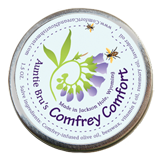Live Kitchen
Teton Family Magazine | Fall 2011
There are many reasons to nudge your kitchen down the path toward living foods. Budget tightening might require cutting back on spending. You might be caught up in an awareness of how much unnecessary trash your eating habits produce. Suddenly you listen to your body and you hear it screaming for a change. You may be working to solve a mystery about food allergies for yourself or a family member. It might just be curiosity.
What exactly does “live food” mean? Live foods are not something trendy or new. It’s more about historic traditions and the foods that kept our ancestors alive and healthy, or killed them. At some time, the ancients must have been a bunch of desperately hungry family groups and tribes looking around for edibles in every form. They found a new plant, it tasted okay, they could chew it but would it make them sick? It was the early version of the television commercials about letting Mikey try it first.
Human bodies have always harbored many kinds of live bacteria. Some of them aid digestion and boost the body’s immune system against disease microbes. Probably most of the greatest advances in our collective culinary history were mistakes. Most involved live foods.
Some Egyptian slave let the flour get wet and the next day the flatbread rose. Wow! Yeast and sourdough were discovered. The herding tribes of Central Asia learned to sew leather bags for carrying water or milk as they traveled. One day with a stroke of luck and just the right blend of bacteria as it bumped along on the back of a mustang, it thickened into tasty, tangy kefir. A crock of goat’s milk left on the altar for the goddess of the hearth in some Middle Eastern village turned into yogurt.
These are imaginings of how live foods came into being. The keepers of these traditions carried their cultures (in more ways than one) and their seed stocks as they migrated around the world. These were forms of wealth back when salt was a trading currency. They traded and taught and learned. Many pioneers of the American West were called “sourdoughs” because of the jars they carried with them to their new homes.
Our society has evolved to a state in which most of us live an urban lifestyle with little contact with agriculture. We buy what we need and want without connection to the source of our food. There is little connection to the land. Not much of a normal American diet is fresh or raw or alive. And yet there are many simple steps to remedy this pattern and take back some control.
Little steps toward independence can feel empowering and add vitality to your life. It is the “chop wood, carry water” approach to life in which the ritual routines become the threads of a joyous tapestry. Take it one step at a time. Many of the product and recipe choices are easy and rewarding. Do you want to be in the kitchen or have your hands in the soil? Do you want a project to accomplish in a day or a couple weeks?
Yogurt is simple. The ingredients to make yogurt are yogurt (about a cup) that contains live bacterial culture and milk of some form. It can be whole milk or low fat, non-instant powdered milk or unpasteurized milk. The milk (5 or 6 cups) needs to be slowly heated to the point of scalding (almost boiling) in a pan on the stove, then allowed to cool to a warm bath temperature. You will need a clean glass jar or ceramic crock with a cover. Crocks are great at holding heat. Fill the jar or crock with hot water to warm it. Add the yogurt to the warm milk and stir. Empty the crock or jar, pour the milk into it and cover. Depending on the room temperature, it could take 6 to 12 hours to become yogurt. You will know by the consistency when you tip or jiggle your container. During this time it needs to be in a warm place with no drafts. That could be over a pilot light, near a wood stove, wrapped in a bath towel inside a cardboard box facing a warm air vent, outside in the sunshine in a protected place.
After the process is completed, refrigerate it. Put a cup of it in a small jar labeled “yogurt culture” so no one gobbles it up and use that to make the next batch. Every time it gets easier and takes less time. Add your favorite fruits, use it in sauces and dressings or eat it plain.
Growing things can be very rewarding for children and adults. Sprouts are fun and microgreens are a dynamic explosion of colors and tastes. Both are projects small in size and short in duration. Both are indoor projects that can happen in the winter to create easy access to fresh, crunchy foods.
Sprouting is done with any of a variety of seeds like alfalfa, mung beans, soybeans or radishes. Put the seeds in a clean jar, soak them for a few hours, drain them, cover with a screen or cheesecloth lid and put the jar in a dark place. Rinse the seeds each day, drain and keep them moist. After they have sprouted, let them have a day in the light to turn green. Eat them in salads or stir fries or refrigerate them. Sprouted grain seeds may be folded into breads for added texture and nutrients.
Microgreens are grown in small trays of soil. Only the above ground plant is snipped and eaten, usually after the first set of leaves appear. There is a wonderful book, Microgreens: A Guide to Growing Nutrient Packed Greens by Eric Franks and Jasmine Richardson that is quite useful. Information online abounds.
Although Kombucha has a documented history throughout many Asian countries since the 1800’s, it has been trendy in the United States for the last couple decades. It is now a manufactured product sold by the millions in individually portioned glass bottles. As it is a fermented drink, sales can be regulated. This tea and sugar combination is cultured from a strange looking, live, pancake shaped “mother” that contains both yeast and beneficial bacteria. Kombucha is a daily regimen of acquired taste that can be grown at home for pennies a gallon. The health benefits have testimonials that range from easing joint pain, aiding digestion to curing cancer and reducing allergies. There is no endorsement from any federal agency but many advocates.
Kimchi and sauerkraut are essentially the same food that were developed on opposite edges of the planet, Korea and Northern Europe. Fermenting vegetables, particularly cabbage, with salt and acids such as vinegar has been a useful manner of preserving foods through the winter seasons. The health benefits of these probiotic foods are returning them to popularity. The crisp, spicy vegetables add dimension to bland meals.
Think about all these forms of live foods. When you are ready, take a step and learn something new. Do what fits to incorporate them into your life.
Avocado Omelet
The crunch of the sunflower microgreens adds incredible texture
Yield: one omelet
2 eggs
1 tablespoon water
salt and pepper
3 tablespoons sour cream
2 tablespoons chopped chives
½ ripe avocado, sliced
1/4 cup or medium handful sunflower microgreens
2 tablespoons butter
1. Beat the eggs in a cup until smooth
2. Add the water, salt and pepper to the eggs and beat a bit more
3. Heat an omelet pan over high heat
4. Add the eggs to the pan, working the pan to evenly cook the eggs
5. Spread the sour cream over half the omelet
6. Evenly spread the avocado slices over the sour cream
7. Sprinkle the chives over the avocado slices
8. Place the sunflower microgreens over the chives
9. Fold the omelet in half and plate
10. Serve hot
Sauteed Carrots with Radish Microgreens
The microgreens are a perfect counterpoint to the richness
Yield: makes four servings
3 cups carrots, grated
2 tablespoons fresh ginger
2 garlic cloves
3 tablespoons butter
salt and pepper
four bunches of freshly snipped radish microgreens
1. Wash carrots and grate by hand or in food processor
2. Grate the ginger through a microplane
3. Heat a saute pan over a hot flame
4. Melt the butter in the pan
5. Add the carrots and stir
6. Add the ginger and stir
7. Press the garlic cloves directly into the pan
8. Stir until the carrots are slightly cooked
9. Remove pan from heat
10. Salt and pepper to taste
11. Divide onto plates and top with radish microgreens
12. Serve
Yogurt Feta Dip or Dressing
Yield: about 1 ½ cups
1 ½ cup yogurt
½ cup crumbled feta cheese
1 tablespoon balsamic vinegar
1 teaspoon hot sauce, such as Tabasco
1 clove garlic, pressed
Salt and pepper to taste
1. Place the yogurt in a small bowl
2. Add the crumbled feta and stir
3. Add the rest of the ingredients and stir
4. May be thinned with water to the appropriate texture
5. Place the bowl on a platter with cut up vegetables in bite sized pieces
Cornmeal Yogurt Pancakes with Blueberries
Yield: about 18 pancakes
1 ¼ cup flour
1 teaspoon baking powder
2 teaspoons baking soda
½ teaspoon salt
3 tablespoons sugar
1 cup cornmeal
1 ½ cup yogurt
½ cup water
3 eggs, well beaten
3 tablespoons melted butter
1 cup blueberries
1. Sift together all dry ingredients
2. Mix together the yogurt, water, eggs and butter
3. Mix the dry ingredients into the wet without over beating
4. Pour about ¼ cup batter onto a hot griddle
5. Sprinkle blueberries on top
6. When the pancake bubbles, flip
7. Do not turn more than once or press down
8. Serve topped with a dollop of yogurt and warm maple syrup



 Auntie Bru's Comfrey Comfort is a natural salve made with love in Jackson Hole, Wyoming. Available at
Auntie Bru's Comfrey Comfort is a natural salve made with love in Jackson Hole, Wyoming. Available at 